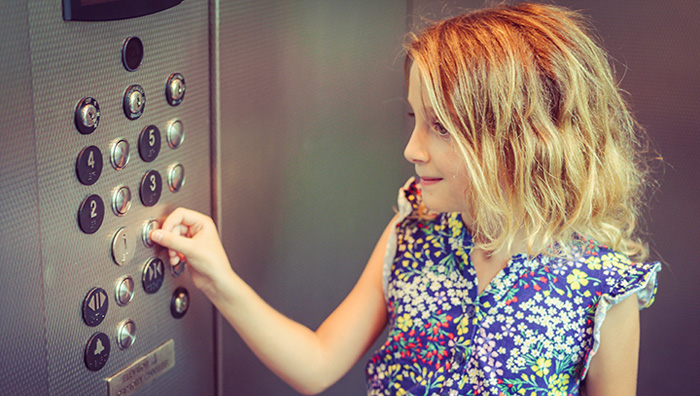Elevators can be dangerous places for children. In fact, according to the Consumer Product Safety Commission, six people per year die in and around elevators, and that number includes one child under age 10 each year. The injury rate is much higher than that. About 2,000 kids are hurt each year in and around elevators, and the most common injuries occur when the elevator doors close on a part of the body. Bruises, scrapes, and strained fingers, hands, arms, elbows and wrists are all common injury types. But for kids under four, the most common injury is to the head.

About 26 percent of elevator injuries occur in one to two years olds, which is the largest of all groups. Because they recently started walking, they’re still unsteady on their feet. Couple that with growing independence and curiosity, and you can see how unsafe it can be for that age group.
Small children, particularly under the age of five, don’t have the coordination, strength, balance or reflexes that people need to prevent an elevator-related injury. Let’s go over some safety protocols of elevators as they pertain to children.
Safety Tips for Kids on Elevators
In general, the same rules for riding elevators apply to kids as adults. If you are a parent, be sure to educate your child on the dangers of elevators. They are not toys and should be approached with caution.
Make sure your kids:
- Are especially careful around the elevator doors.
- Don’t put their hands or feet between the moving door and door jamb.
- Don’t try to stop a closing door with their hand or foot.
- Let others exit before boarding the car.
- Get in and out quickly.
- Are patient in waiting for help to arrive if stuck.
- Never press the emergency button unless you instruct them to do so in a real emergency.
- Know to use the stairs and not the elevator if there is a fire in the building.
- Watch their step when entering or exiting.
- Are aware that sometimes when the car opens, it’s not always completely level with the floor.
- Know they may push the “door open” button if they see people rushing to get on.
- Know never to climb out of a stalled elevator or pry open closed doors. Children should not be allowed to play on or near an elevator.
- Children should only operate an elevator under direct adult supervision.
As a parent, it’s important to model good behavior. What you do, your kids see. Make sure you are showing them a good example of elevator safety when you visit an office building, store or apartment building. Part of being a safe elevator passenger means also being courteous to your fellow passengers.
Hold doors open for others using the open button rather than extremities. Signal women and children to exit the elevator first. These are all courteous behaviors that show your children that elevators are to be respected.
Here at Mowrey Elevator, we take elevator safety seriously and do all we can to educate the public on this important issue.
